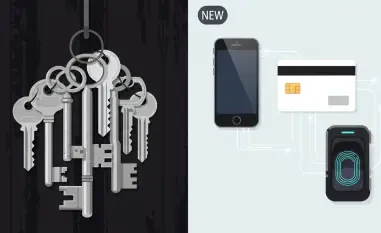In today’s digital landscape, where cyber threats loom larger than ever, organizations face a daunting reality: a staggering number of data breaches occur due to compromised credentials or insider threats, with reports indicating millions of records exposed annually. Imagine a scenario where a single stolen password grants an attacker unfettered access to an entire corporate network, bypassing outdated perimeter defenses with ease. This pressing challenge underscores the urgent need for a paradigm shift in cybersecurity toward a model that assumes no trust, even within internal systems. This guide offers a comprehensive roadmap to building a Zero Trust Architecture (ZTA), a security framework rooted in the “never trust, always verify” principle, using cost-effective and flexible open source tools. By following these steps, readers will learn how to safeguard their environments against modern threats, regardless of whether their infrastructure spans on-premises servers, cloud platforms, or remote workforces.
The purpose of this guide is to demystify the implementation of Zero Trust, a strategy that continuously authenticates and authorizes every user, device, and connection, ensuring robust protection in dynamic and distributed setups. Traditional security models, often likened to a castle with a moat, fail to address the complexities of cloud adoption and remote work, leaving vulnerabilities wide open. By leveraging open source software, organizations can adopt cutting-edge security practices without the burden of expensive proprietary solutions, making this approach accessible to businesses of all sizes.
This guide not only highlights the critical importance of moving beyond perimeter-based defenses but also provides actionable insights into constructing a resilient security posture. It addresses the evolving threat landscape, where attackers exploit sophisticated techniques to infiltrate even the most fortified systems. Readers will gain a clear understanding of how open source tools can be harnessed to create a layered defense, ensuring that security is maintained at every touchpoint within their digital ecosystem.
Why Zero Trust Matters in Today’s Cybersecurity Landscape
Zero Trust Architecture represents a fundamental shift in cybersecurity, moving away from the outdated notion of trusting entities inside a network perimeter by default. In an era where remote work has become commonplace and cloud services dominate infrastructure, the traditional model of a fortified boundary no longer suffices. ZTA operates on the principle that every access request, whether from inside or outside the network, must be verified continuously, addressing vulnerabilities exposed by modern work environments and advanced cyber threats.
The urgency of adopting Zero Trust cannot be overstated, as attackers increasingly target credentials and exploit misconfigurations to gain entry. With the rise of phishing campaigns and ransomware, organizations face unprecedented risks that demand a proactive stance. This approach ensures that even if a breach occurs, the damage is contained through strict access controls and constant monitoring, minimizing the potential for lateral movement by malicious actors.
Open source tools present a compelling solution for implementing ZTA, offering flexibility and cost savings compared to proprietary alternatives. These tools enable organizations to customize their security frameworks to fit unique needs, whether protecting a small startup’s cloud assets or securing a multinational corporation’s hybrid environment. By embracing this mindset and technology, businesses can build resilience against an ever-changing threat landscape.
The Evolution of Security Models and the Rise of Zero Trust
Historically, cybersecurity relied on the “castle-and-moat” model, where a strong perimeter—think firewalls and VPNs—was assumed to keep threats at bay while everything inside was trusted. This approach has become obsolete as networks have grown more distributed, with employees accessing resources from various locations and devices. The dissolution of a clear boundary has rendered such defenses inadequate against insiders or attackers who breach the outer wall.
Zero Trust emerged as a response to these shortcomings, advocating for continuous authentication, authorization, and encryption at every level of interaction. This framework assumes that threats can originate from anywhere, necessitating verification for each user, device, and application request. Its principles align perfectly with the needs of dynamic environments, where cloud services and remote access are integral to operations, ensuring that security adapts to complexity.
The evolving threat landscape, characterized by state-sponsored attacks and zero-day exploits, further justifies the shift to ZTA. Organizations must rethink their strategies to prioritize identity and context over location-based trust. Open source solutions stand out as viable options, providing the tools needed to implement this model without the prohibitive costs often associated with enterprise-grade software, paving the way for widespread adoption.
Crafting a Zero Trust Framework with Open Source Tools
Implementing a Zero Trust framework requires a structured approach, leveraging open source software to address each core component of security. These tools offer adaptability across diverse environments, from traditional data centers to cloud-native setups. The following steps provide a detailed guide to building a robust ZTA using accessible and powerful solutions.
Each step focuses on a specific pillar of Zero Trust, ensuring that identity, access, devices, networks, and monitoring are all fortified against potential threats. By integrating these open source tools, organizations can create a cohesive security posture that evolves with their needs. The diversity of available software means that solutions can be tailored to specific use cases, enhancing both protection and efficiency.
This guide breaks down the process into manageable phases, each supported by proven tools that align with Zero Trust principles. Readers will find practical instructions for deployment, along with insights into how these components work together. The emphasis remains on accessibility, demonstrating that advanced security is achievable without breaking the budget.
Step 1: Establishing Strong Identity Management with Keycloak
Identity verification serves as the bedrock of Zero Trust, ensuring that only authenticated users gain access to resources. Keycloak, developed by Red Hat, stands out as a leading open source tool for managing identities through single sign-on (SSO), multi-factor authentication (MFA), and detailed authorization policies. Its robust feature set makes it an ideal starting point for securing access across applications.
Seamless SSO Integration
Keycloak simplifies user access by providing a centralized platform for identity management, allowing seamless SSO across multiple applications. This eliminates the need for repeated logins, reducing user friction while maintaining a high level of security. By consolidating authentication, it ensures that policies are uniformly applied, minimizing the risk of oversight.
Enhancing Security with MFA
Multi-factor authentication remains a critical defense against unauthorized access, and Keycloak offers built-in support for various MFA methods. This added layer of verification, such as requiring a second factor like a mobile app token, significantly reduces the likelihood of credential theft leading to a breach. Implementing MFA through this tool strengthens the first line of defense in a Zero Trust model.
Step 2: Securing Access with Identity-Aware Proxies like Pomerium
Traditional VPNs often fall short in providing granular access control, but identity-aware proxies like Pomerium address this gap effectively. Pomerium acts as a reverse proxy that enforces access based on user identity for every request, aligning with Zero Trust by eliminating implicit trust. This approach secures internal applications without exposing them to unnecessary risk.
Replacing VPNs with Contextual Access
Pomerium enables secure access to internal resources by validating identity at every interaction, rendering VPNs obsolete in many scenarios. This contextual approach ensures that access decisions consider user credentials, device posture, and other factors before granting entry. Such precision prevents unauthorized access even in complex environments.
Simplifying Policy Enforcement
Defining granular access rules becomes straightforward with Pomerium, allowing administrators to specify permissions for individual users or groups. This capability ensures that only authorized personnel can interact with specific resources, adhering to the least privilege principle. The simplicity of policy management enhances security without adding operational overhead.
Step 3: Monitoring Device Health with Osquery
Ensuring device compliance is a vital aspect of Zero Trust, and Osquery, developed by Meta, provides powerful capabilities for assessing device posture. By querying operating system data as if it were a database, Osquery delivers detailed insights into device health and configuration. This visibility is essential for maintaining security across endpoints.
Real-Time Device State Insights
Osquery enables real-time monitoring of device states, capturing critical information about software versions, security settings, and potential vulnerabilities. This granular data helps identify non-compliant devices before they become entry points for attackers. Such proactive monitoring aligns with the continuous verification demanded by Zero Trust.
Ensuring Compliance at Scale
Scaling device monitoring across large fleets is achievable with Osquery, ensuring consistent security checks regardless of the number of endpoints. Its lightweight design and SQL-based querying make it efficient for enterprise environments. This scalability ensures that compliance remains a cornerstone of security as organizations grow.
Step 4: Building Secure Networks with OpenZiti and Tailscale
Networking in a Zero Trust framework requires innovative approaches, and tools like OpenZiti and Tailscale redefine connectivity with identity-based solutions. These open source options create secure overlay networks that prioritize verification over location. Their design supports distributed teams and hybrid infrastructures effectively.
Hidden Applications with OpenZiti
OpenZiti takes a unique approach by hiding applications from the public internet, only revealing them after access is explicitly granted based on identity. This invisibility reduces the attack surface, as potential intruders cannot even detect the presence of resources. Such a model exemplifies Zero Trust by eliminating implicit access.
Mesh Networking with Tailscale
Tailscale leverages WireGuard to establish secure, peer-to-peer connections, creating a mesh network ideal for distributed teams. This setup ensures that devices communicate directly with verified endpoints, bypassing traditional network vulnerabilities. The ease of deployment makes it a practical choice for modern connectivity needs.
Step 5: Enhancing Visibility through Monitoring Stacks like ELK and PLG
Continuous monitoring forms a critical component of Zero Trust, and open source stacks like ELK (Elasticsearch, Logstash, Kibana) and PLG (Promtail, Loki, Grafana) excel in this domain. These tools aggregate and analyze data from various security components, providing comprehensive visibility. Their capabilities enable rapid threat detection and response.
Aggregating Telemetry Data
ELK and PLG stacks centralize telemetry data from across the Zero Trust framework, ensuring that logs and metrics are readily accessible for analysis. This aggregation allows administrators to correlate events and identify anomalies that might indicate a breach. Centralized data collection is indispensable for maintaining situational awareness.
Visualizing Threats in Real Time
Tools like Grafana within the PLG stack offer intuitive dashboards that visualize potential threats in real time, empowering teams to act swiftly. These visual representations transform complex data into actionable insights, highlighting suspicious activities or policy violations. Real-time visibility ensures that security remains dynamic and responsive.
Step 6: Implementing Granular Policies with Tools like Cilium and Pritunl Zero
Granular policy control enhances Zero Trust by restricting access to the minimum necessary, and tools like Cilium and Pritunl Zero provide specialized capabilities. Cilium focuses on network security in Kubernetes environments, while Pritunl Zero streamlines access for SSH and web applications. Both emphasize identity-driven rules for precision.
Securing Kubernetes with Cilium
Cilium offers micro-segmentation for Kubernetes clusters, enforcing detailed network policies to isolate workloads and prevent lateral movement. This level of control is crucial in cloud-native setups, where traditional security tools often fall short. Its integration with container environments ensures robust protection.
Streamlining Access with Pritunl Zero
Pritunl Zero simplifies secure access to SSH and web resources by implementing identity-based policies, reducing administrative complexity. This tool ensures that only verified users interact with sensitive systems, adhering to Zero Trust principles. Its user-friendly design supports efficient deployment across various scenarios.
Key Takeaways for Building Zero Trust with Open Source
This section consolidates the essential elements of constructing a Zero Trust framework using open source tools, presented as a concise reference for implementation:
- Identity management forms the foundation, with Keycloak enabling SSO and MFA for robust authentication.
- Secure access without VPNs is facilitated by Pomerium and similar identity-aware proxies for contextual control.
- Device monitoring through Osquery ensures compliance and visibility across endpoints.
- Networking transforms with OpenZiti and Tailscale, creating identity-based, secure connections.
- Continuous monitoring via ELK or PLG stacks enhances threat detection and response capabilities.
- Granular policies enforced by Cilium and Pritunl Zero protect specific environments with precision.
These takeaways emphasize the practicality of open source software in achieving a comprehensive Zero Trust posture. Each tool addresses a critical aspect of security, ensuring a layered defense. Organizations can rely on these solutions to build adaptable and resilient systems.
The Broader Impact of Open Source in Zero Trust Adoption
Leveraging open source tools for Zero Trust aligns with a broader trend in cybersecurity toward democratizing access to advanced solutions. This movement breaks down barriers, enabling organizations of all sizes to implement cutting-edge practices without prohibitive costs. The availability of such tools fosters innovation and collaboration across the industry.
The adaptability of open source software ensures compatibility with diverse setups, from startups with limited resources to enterprises managing complex hybrid environments. This flexibility allows for tailored security strategies that evolve alongside organizational growth. As a result, Zero Trust becomes a feasible goal for a wider audience.
Looking ahead, challenges such as maintaining technical expertise and integrating evolving tools must be addressed to sustain adoption. However, the open source community continually develops resources and support to mitigate these hurdles. This ongoing evolution strengthens resilience, ensuring that security practices remain robust in a dynamic digital landscape.
Embracing Zero Trust with Open Source: Your Next Steps
Reflecting on the journey outlined, the implementation of Zero Trust Architecture using open source tools proves to be a transformative endeavor for enhancing cybersecurity. The steps provided offer a clear path to fortify defenses through identity management, secure access, device monitoring, innovative networking, continuous visibility, and granular policies. Each phase contributes to a comprehensive security posture that adapts to modern threats.
As a forward-looking consideration, organizations are encouraged to initiate pilot projects focusing on critical applications or user groups to test these tools in controlled settings. Investing in team skills emerges as a pivotal action, ensuring that staff can effectively manage and customize open source solutions. Fostering cultural acceptance within the organization also plays a key role, positioning Zero Trust as an enabler of secure productivity rather than a barrier.
Beyond immediate implementation, exploring additional resources and community support within the open source ecosystem offers a valuable avenue for growth. Engaging with forums and documentation helps address unique challenges and refine strategies over time. This proactive approach solidifies the foundation for a security framework that can evolve with emerging threats and technological advancements.













